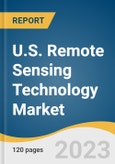Technological and scientific innovations are required to secure sufficient food for the fast-growing global population. For instance, NASA Acres Consortium, NASA’s U. S.-focused agriculture and food security program, focused on applying satellite Earth Observation (EO) information to the agricultural and food security challenges faced by farmers, ranchers, and agrifood system stakeholders based in the U. S. To boost the U. S. agricultural sector, NASA Acres collaborated with individuals across the farm sector to develop EO-based data and solutions. To provide U. S. agriculture decision-makers with the advantages of NASA data and tools, the consortium model brings together the public and private sectors and enables flexible collaborations and quick action.
Likewise, GIS and remote sensing collectively help environmental decision-makers and scientists optimize global data and information sharing, enable resource allocation, and promote cost-efficient and effective environmental risk assessment and management practices. As industrialization and population growth put more pressure on the Earth's environment, remote sensing, and GIS are expected to become critical for environmental risk assessment and management.
Remote sensing poses several challenges, despite making complex issues more accessible and usable. Managing massive amounts of data in complex data formats with difficult processing is one of the main problems. These challenges are expected to limit its adoption among end users, further limiting the growth of the U. S. remote sensing technology industry.
U. S. Remote Sensing Technology Market Report Highlights
- Based on technology, the passive remote sensing segment is anticipated to register the fastest CAGR over the forecast period. Passive remote sensing technology measures the reflected sunlight from the earth’s surface to monitor and analyze surface characteristics
- Based on application, the disaster management segment is anticipated to register the fastest CAGR over the forecast period. By identifying risk zones related to flood plains, coastal flooding and erosion, and active faults, remote sensing can help risk reduction initiatives, thereby expected to drive segment growth
- Based on platform, the aerial systems segment is anticipated to register the fastest CAGR over the forecast period. Aerial systems platform decreases human error and increases surveying and area accuracy overall. They can also assist in surveying inaccessible places through satellite images, improving utility
Table of Contents
Companies Mentioned
- Maxar Technologies
- Esri
- General Dynamics Mission Systems, Inc.
- Hexagon
- Lockheed Martin Corporation
- Orbital Insight
- Planet Labs PBC
- Raytheon Technologies Corporation
- Teledyne Technologies Incorporated
- Leidos
Methodology

LOADING...
Table Information
| Report Attribute | Details |
|---|---|
| No. of Pages | 120 |
| Published | August 2023 |
| Forecast Period | 2022 - 2030 |
| Estimated Market Value ( USD | $ 4.99 Billion |
| Forecasted Market Value ( USD | $ 10.7 Billion |
| Compound Annual Growth Rate | 9.8% |
| Regions Covered | United States |
| No. of Companies Mentioned | 10 |









